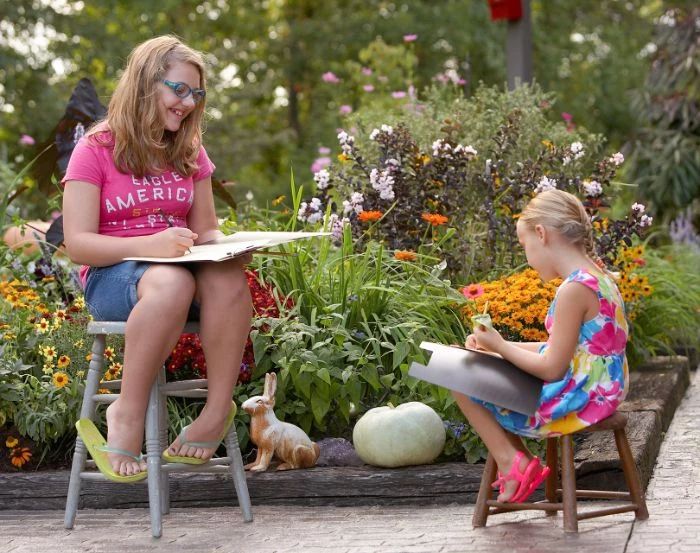Real-Deal Backyard Fun: Secretly Smart Activities for Kids
After years of working with kids as an early childhood educator, I’ve noticed one thing all parents want: ways to keep their kids busy. But let’s be honest, the real goal isn’t just to fill time. It’s about creating moments that actually help their little brains and bodies grow. And guess what? Your backyard is probably the best classroom you’ve got, if you know how to use it.
In this article
Oh, and if you’re short on time and just need a win, here’s my all-time favorite 5-Minute Sanity Saver: Give your kid a paintbrush and a cup of plain water. Let them “paint” the sidewalk, the fence, or the deck. It’s completely free, makes zero mess, and can honestly buy you a solid 15 minutes of peace. You’re welcome.
This guide isn’t a list of Pinterest-perfect crafts designed to make you feel bad. It’s a collection of field-tested activities that are genuinely fun and secretly brilliant for development. I’ll break down not just what to do, but why it’s great for them, how to pull it off without a headache, and what to do when things (inevitably) get a little messy.
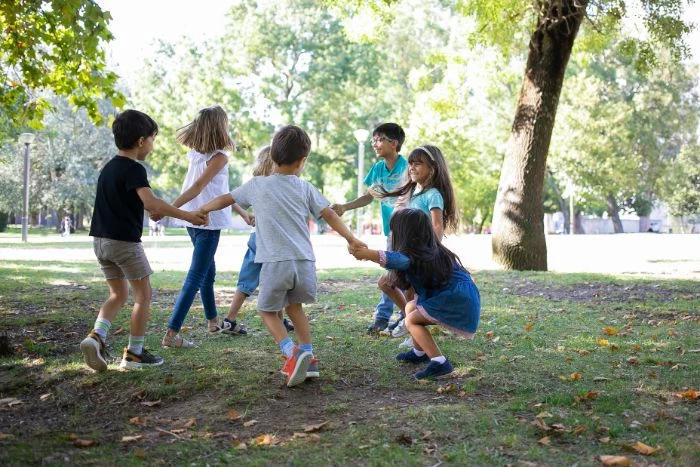
The ‘Why’ Behind the Play (The Important Bit!)
Before we dive in, let’s get on the same page about what’s happening when kids are just… playing. It’s not random. It’s their most important work. Understanding this helps you see the genius in a pair of muddy pants or a fort that keeps falling down.
When a kid is just running around, they’re building gross motor skills. When they stop to pick up a tiny pebble, that’s fine motor skills—the foundation for everything from tying shoes to writing their name. Feeling the cool grass, hearing birds, smelling damp earth… that’s all sensory input that helps their brain make sense of the world.
Here are two fancy terms the pros use that are actually super simple: proprioceptive and vestibular senses. Proprioception is just your body’s built-in GPS—knowing where your arms and legs are without looking. Pushing a wheelbarrow or carrying a bucket of water builds this sense. The vestibular system, located in the inner ear, is all about balance. Swinging, spinning, and rolling down a hill are like a tune-up for this system, which is linked to better focus and emotional regulation. So yeah, that dizzy kid is actually doing some serious brain work.
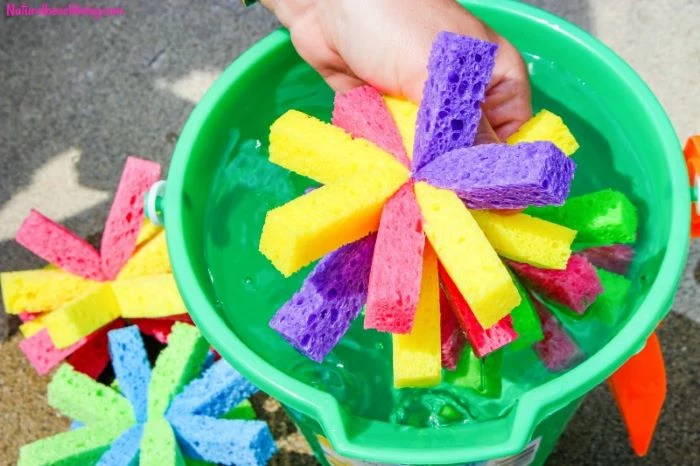
Section 1: Water Play That’s Actually Worth the Mess
Water is a kid magnet. It can be calming, exciting, and a fantastic teacher of basic physics. It also requires your full attention, so put your phone away for these.
Technique: Sponge Bomb Toss
This is my go-to alternative to water balloons. They’re reusable, way safer, and surprisingly satisfying to squish and throw.
Best for Ages: 3 and up
Prep Time: 10 minutes
Playtime Estimate: 20-40 minutes
The Damage: Around $10 for a multi-pack of sponges and some twine.
What You’ll Need:
- 4-6 new sponges in different colors. Grab some with a scrubby side for extra texture!
- Cotton twine or a sturdy zip tie (the dollar store is great for this).
- Scissors
- A bucket of water
How to Make Them:
- Cut each sponge lengthwise into four long strips. You’ll end up with a big pile of colorful sponge ‘noodles.’
- Grab a bundle of about 8 strips, mixing up the colors. Stack them up.
- Wrap the twine TIGHTLY around the middle and double-knot it. If you use a zip tie, pull it super tight and—this is important—snip the extra tail off so it’s completely flush. A sharp plastic edge can give a nasty scratch.
- Fluff the strips out to make a starburst or ball shape. Dunk ’em and they’re ready to go!
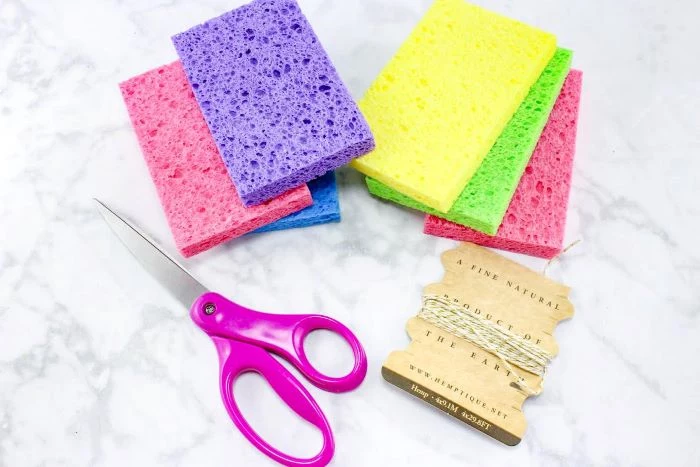
Why It’s Secretly Smart: Squeezing the water out builds hand strength needed for handwriting. The heavy, wet sponge gives great feedback to their body’s ‘GPS’ (that’s proprioception!). Plus, aiming at a target is great for hand-eye coordination.
Heads Up! The number one rule of water play is NO running on wet surfaces. I’ve seen way too many slips on patios. Set up a ‘walk-only’ zone on the grass. And never, ever leave a bucket of water unattended with little ones. A child can drown in just a few inches.
Technique: The Gutter & Soap Boat Race
This is a fantastic, hands-on introduction to things like flow, speed, and friction. It’s a science experiment disguised as a boat race.
Best for Ages: 4 and up
Prep Time: 5 minutes
Playtime Estimate: 30 minutes
The Damage: A 10-foot section of vinyl rain gutter is surprisingly cheap, maybe $10-$15 at a hardware store like Home Depot or Lowe’s.
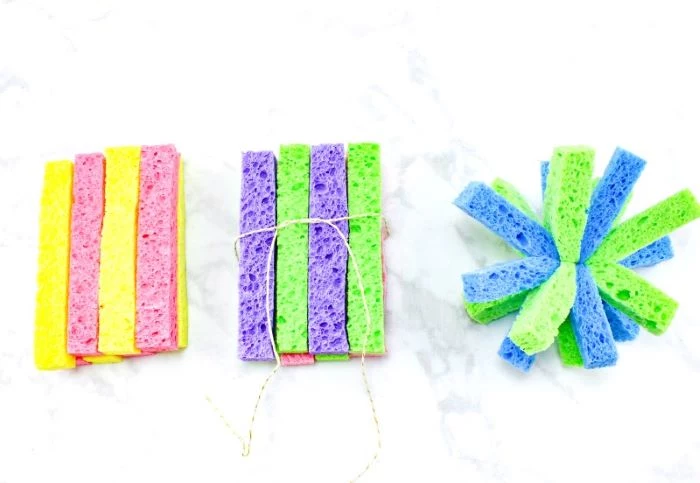
What You’ll Need:
- One 10-foot section of plastic rain gutter.
- A few different bars of soap (Good to know: Ivory soap floats!).
- Toothpicks and little paper or foam squares for sails.
- A garden hose.
- A couple of bricks or wood blocks to prop up the gutter.
How to Set It Up:
- First, feel along the edges of the gutter for any sharp bits left over from when it was cut. If you find any, sand them down. Safety first!
- Prop one end of the gutter on a brick or a stair to create a gentle slope.
- Stick a toothpick ‘mast’ with a paper sail into each bar of soap.
- Place the ‘boats’ at the top and turn on the hose at the same end to create a gentle, steady stream of water. A lesson I learned the hard way: if you blast the hose, the boats just flip and everyone gets frustrated. Gentle is the key.
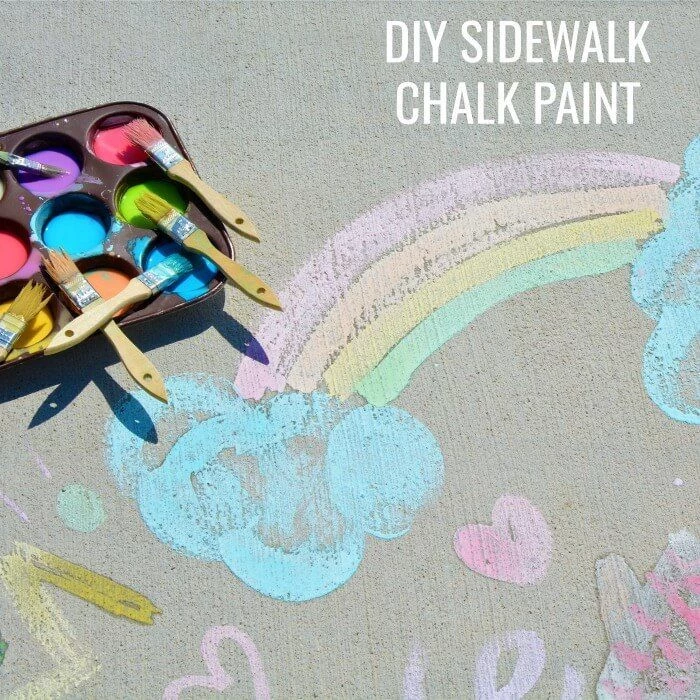
Why It’s Secretly Smart: Which soap is fastest? What happens if the water flows faster? This is pure, hands-on physics that encourages them to ask questions and test ideas. By the way, if your partner complains about turning the backyard into a science lab, just tell them, “It’s not a mess, it’s a foundational lesson in fluid dynamics!”
Small Space Hack: No yard? No problem. You can get a similar effect using a long, shallow under-the-bed storage tub. Just prop up one end and pour water from a pitcher. Works great on a balcony or patio!
Section 2: Backyard Art (Embrace the Mess)
Messy play is one of the most freeing things for a kid. The secret is to prepare for the mess so you can actually relax and let them explore.
Technique: Homemade Sidewalk ‘Puff’ Paint
Store-bought chalk is fine, but making your own paint is half the fun. The puffy texture is completely different and encourages big, bold arm movements.
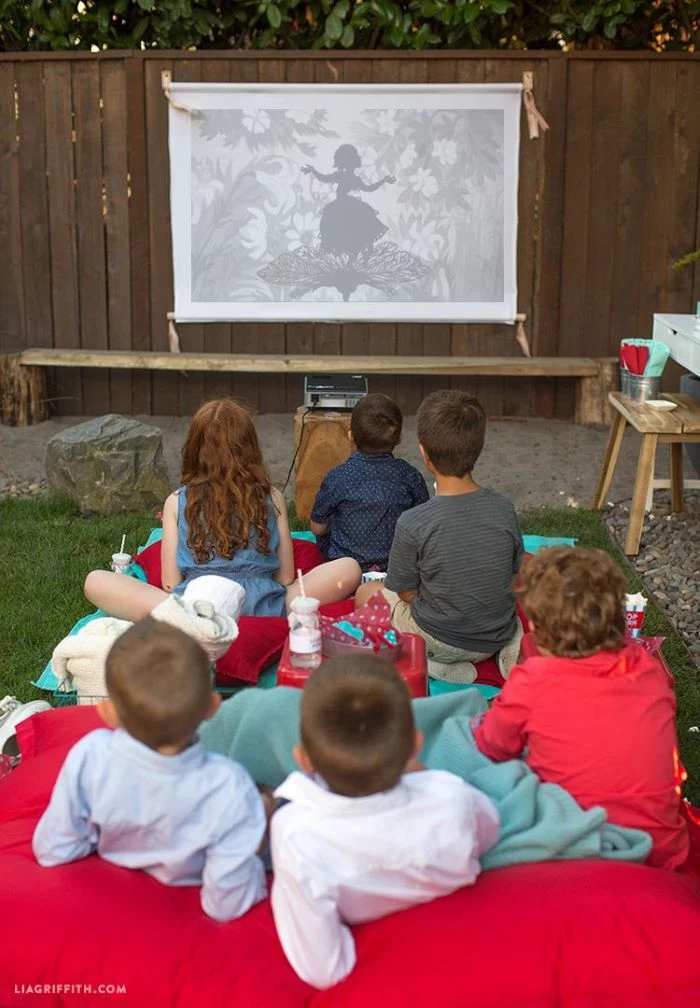
Best for Ages: 3 to 8
Prep Time: 5 minutes
Playtime Estimate: 30-45 minutes
The Damage: Basically free if you have cornstarch and food coloring.
What You’ll Need:
- 1 cup cornstarch
- 1 cup cool water
- Gel food coloring (it gives much richer colors than the liquid kind)
- A muffin tin or some small bowls
- A whisk and some paintbrushes
How to Make It:
- In a bowl, whisk the water into the cornstarch slowly to avoid lumps. It will feel weird and thick—that’s a non-Newtonian fluid, which is a cool little science lesson right there.
- Pour the mix into your muffin tin sections.
- Add a generous squeeze of different gel colors to each section and stir. Don’t be shy with the color!
Why It’s Secretly Smart: Painting on a huge canvas like the driveway forces them to use their whole arm, strengthening the shoulder and core muscles they need for stable handwriting later on. It’s pure, open-ended creativity.
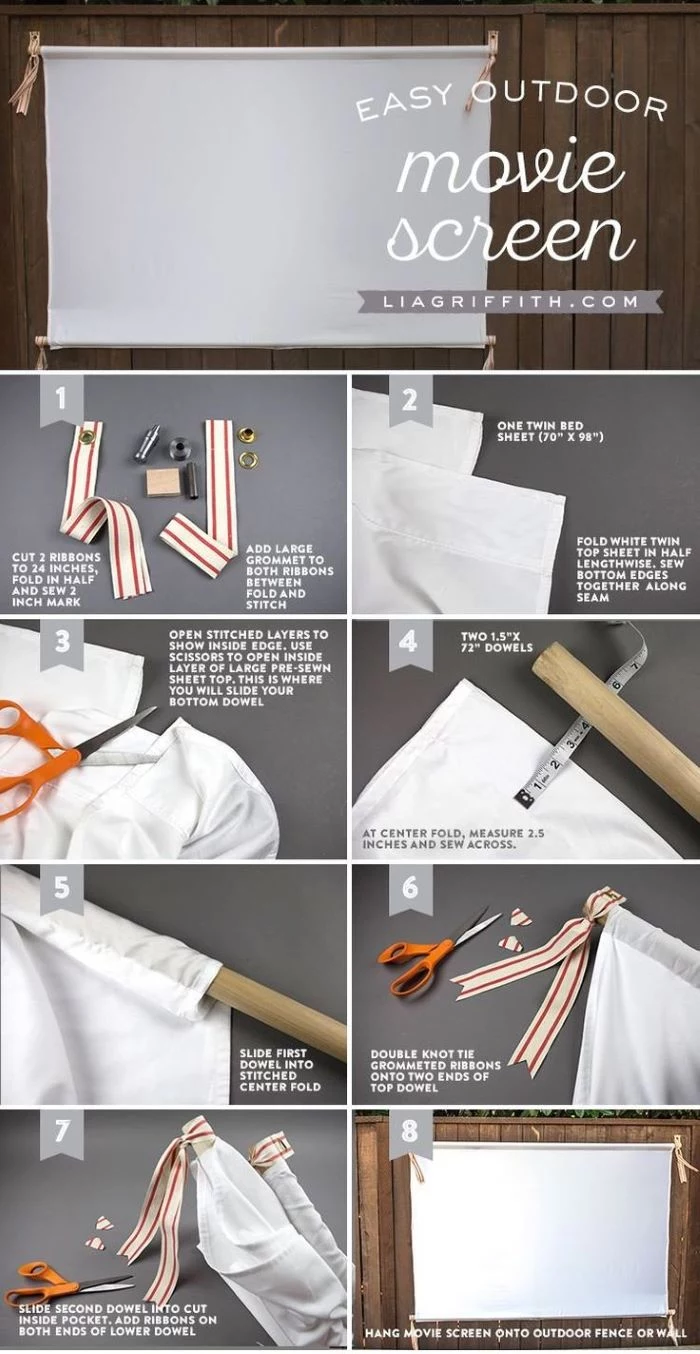
Cleanup Quick Tip: This paint washes off sealed concrete and asphalt beautifully. BUT… on porous, unsealed stone or light-colored pavers, strong colors like red and blue can sometimes leave a faint stain. I always tell people to test it on a hidden spot first.
Technique: The Bubble Snake Maker
This is a wonderfully weird and satisfying activity that creates giant, foamy snakes of bubbles. It’s also a sneaky lesson in air pressure and surface tension.
Best for Ages: 4 and up (with close supervision)
Prep Time: 5 minutes
Playtime Estimate: 20 minutes
The Damage: Free! You’ve got this stuff already.
What You’ll Need:
- An empty 16oz plastic water bottle
- An old, clean sock (fuzzy ones work best)
- Duct tape or a strong rubber band
- A shallow dish and some bubble solution
- Optional: A few drops of food coloring
How to Make It:
- An adult needs to carefully cut the bottom 2 inches off the water bottle.
- Pull the sock tightly over the new open end of the bottle.
- Secure it with duct tape to get a good seal.
- Pour bubble solution into the dish. If you want colored snakes, add food coloring here.
- Dip the sock end in the solution, then blow gently into the mouth of the bottle.
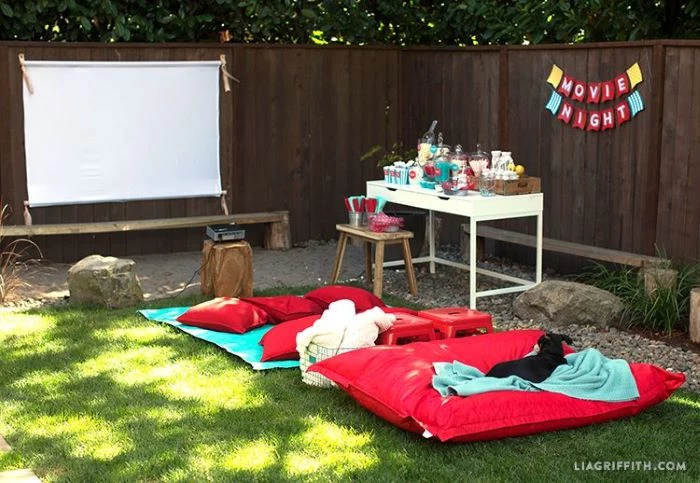
CRUCIAL SAFETY WARNING: Before you even start, you HAVE to teach your child to BLOW OUT and never, ever breathe in. Practice with just the bottle first. If they suck in, they’ll get a mouthful of soap. This is one to supervise closely.
Cleanup Quick Tip: If you use food coloring, be warned: it WILL stain clothes. This is a perfect activity for that old t-shirt that already has a spaghetti stain on it.
Section 3: Building, Engineering, and Big Body Play
This is all about moving big muscles and learning how the physical world works. It builds resilience, confidence, and a surprising amount of engineering skill.
Technique: The Awesome Obstacle Course
An obstacle course is so much more than a way to burn energy. A well-designed one challenges a ton of different skills at once.
Best for Ages: 3-8 (just change the difficulty)
Prep Time: 10-15 minutes
Playtime Estimate: Endless! They’ll want to do it over and over.
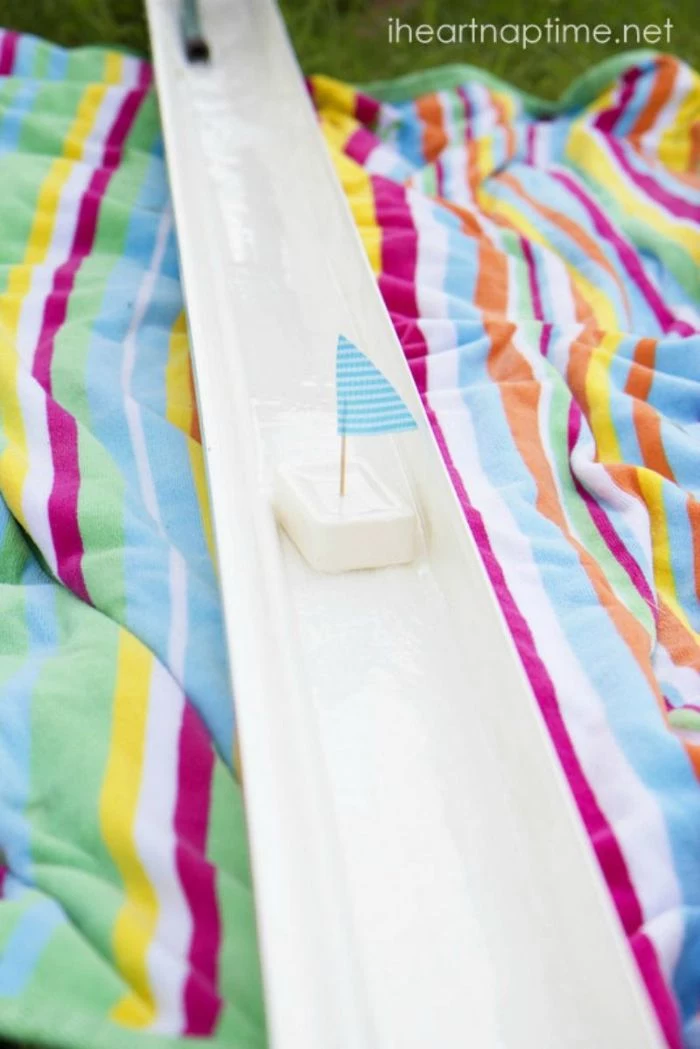
The Recipe for a Great Course: Don’t overthink it! Just grab one or two items from each of these categories:
- Crawl Under: A blanket over two chairs, a big cardboard box, a patio table.
- Balance On: A 2×4 board laid on the grass, a line of tape, or just walking heel-to-toe along a crack in the driveway.
- Jump Over/Into: Pool noodles bent into circles, hula hoops, chalk circles.
- Weave Through: A zig-zag of shoes, buckets, or toys.
- A Final Task: Throw three rolled-up socks into a laundry basket, or carry a small cup of water to the finish line without spilling.
Why It’s Secretly Smart: This is a massive workout for motor planning—the brain’s ability to create and follow a sequence of actions. For older kids, add a stopwatch so they can race against their own time. This introduces the concept of personal bests in a fun, low-pressure way.
Technique: Purposeful Fort Building
Building a fort is a childhood rite of passage. It’s also a masterclass in engineering, cooperation, and creative problem-solving.
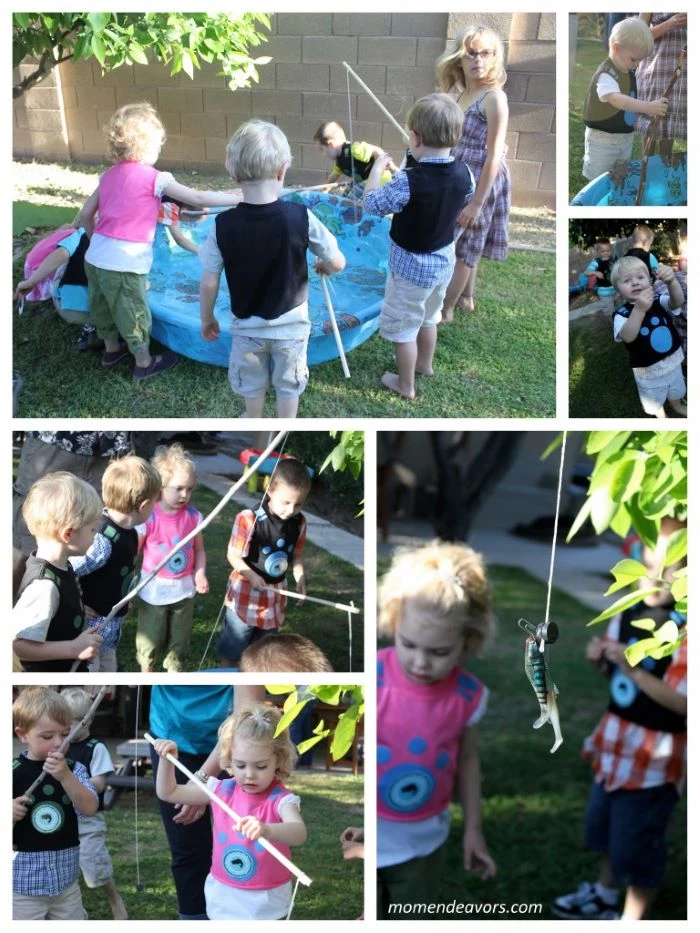
Best for Ages: 4 and up
Prep Time: 5 minutes of gathering materials
Playtime Estimate: At least an hour, maybe all afternoon.
What You’ll Need:
- Structure: Low tree branches, patio chairs, a fence line.
- Covering: Old bedsheets, tarps. Don’t use your good stuff.
- Fasteners: Clothespins are your best friend. Rope and bungee cords work too, but require adult supervision.
- Budget-Friendly Tip: The absolute best forts are made from giant cardboard boxes. Swing by an appliance store on a weekday and ask if they have any fridge or dishwasher boxes. They’re usually happy to give them away for free.
My Best Advice: The real learning is in the struggle. When the roof sags or a wall falls down, resist every urge to jump in and fix it. The negotiations (“No, the blue sheet goes here!”) and the problem-solving are where the magic happens. Your job is just to make sure the structure is stable and won’t topple over on them.
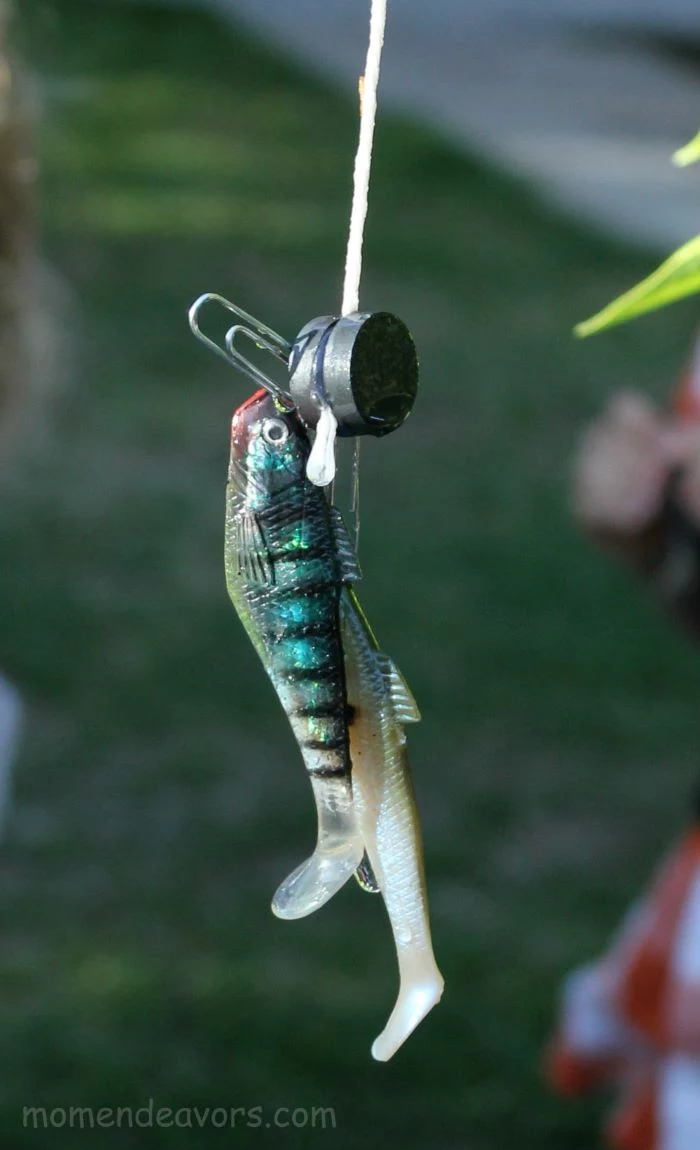
Section 4: Quiet Time & Nature Connection
Not all outdoor play has to be loud. Quiet, focused activities build patience, observation skills, and a genuine appreciation for the little details of the natural world.
Technique: From Nature Collector to Nature Curator
Most kids love collecting stuff. We can elevate this from a random pocketful of rocks into a more intentional, brain-building practice.
Best for Ages: 3 to 7
Prep Time: 1 minute
Playtime Estimate: 15-25 minutes
What You’ll Need:
- An empty egg carton or a small box with dividers.
- A ‘mission.’
How It Works: Instead of saying “go find stuff,” give them a specific mission. The egg carton is perfect for keeping their treasures organized.
- The Texture Hunt: Find something smooth, rough, bumpy, soft, and prickly.
- The Color Hunt: Find five different shades of green. Or find one thing that’s brown, grey, and white.
- The Shape Hunt: Find a leaf that is long, one that is round, and one with points.
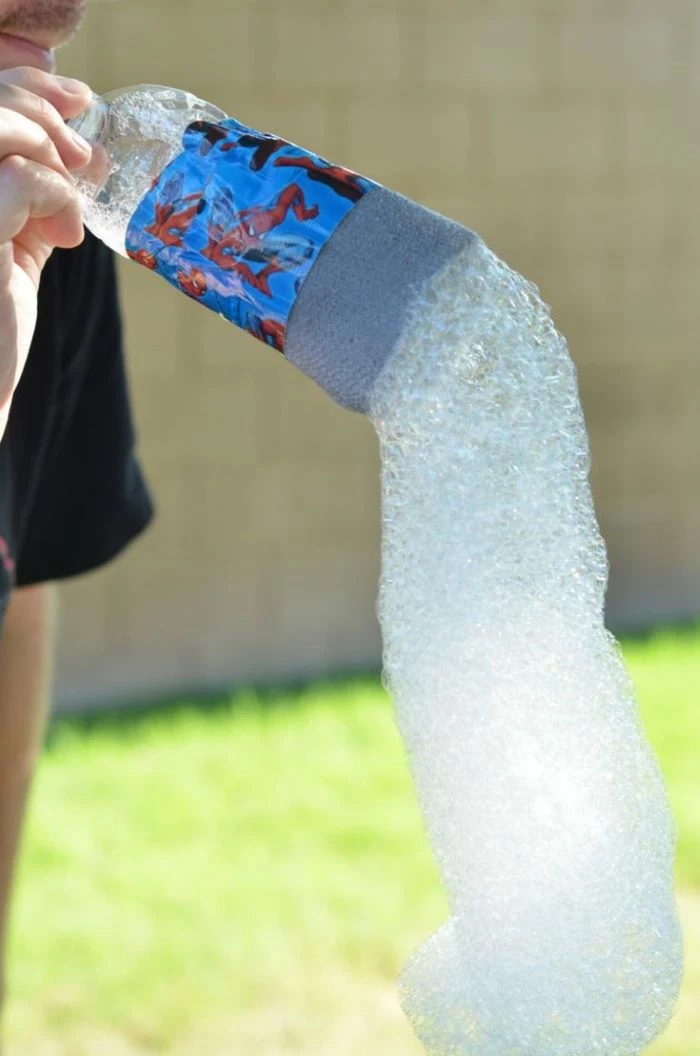
Why It’s Secretly Smart: This simple shift forces a child to look closely at their environment instead of just running through it. It builds their vocabulary and observation skills. When they return, ask them, “Tell me about this rock. Why did you choose it?” It’s a great conversation starter.
A Quick Note on Respect: This is a great time to teach the ‘leave no trace’ idea. It’s okay to pick up a fallen leaf, but we don’t pick living flowers or pull bark off trees. We’re just visitors in nature’s home.
My Final Two Cents
Look, the success of any of these activities has less to do with the stuff you buy and more to do with your mindset. Your role isn’t to be an entertainer; it’s to be a facilitator. Set up the environment, make sure it’s safe, and then step back. Let your child lead. Let them get bored. Boredom is where creativity is born.
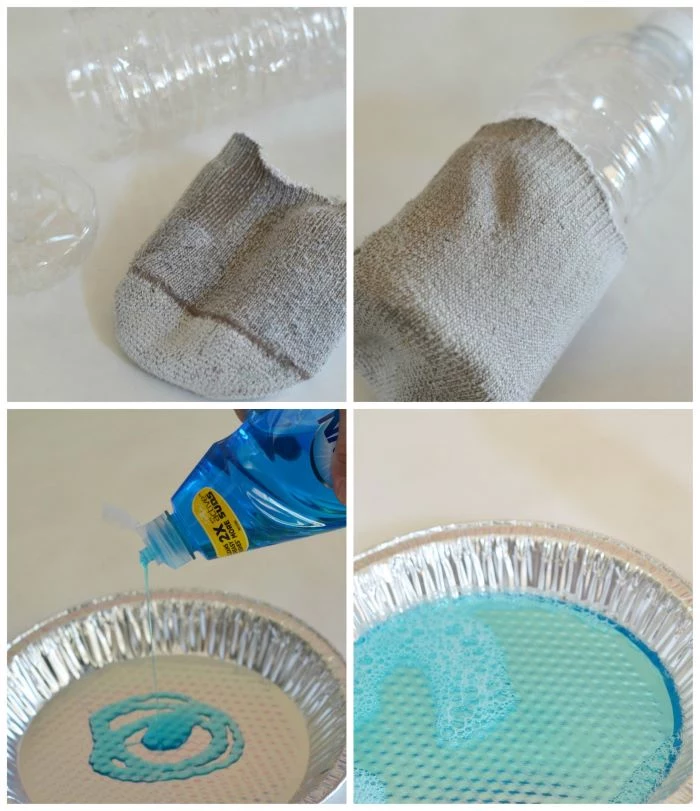
And remember, the paint will spill, the fort will collapse, and the boat race might end in a meltdown. It’s all part of it. The most valuable thing you can give them is your permission to explore, get messy, and discover the world on their own terms. That’s the real goal here.
Inspirational Gallery
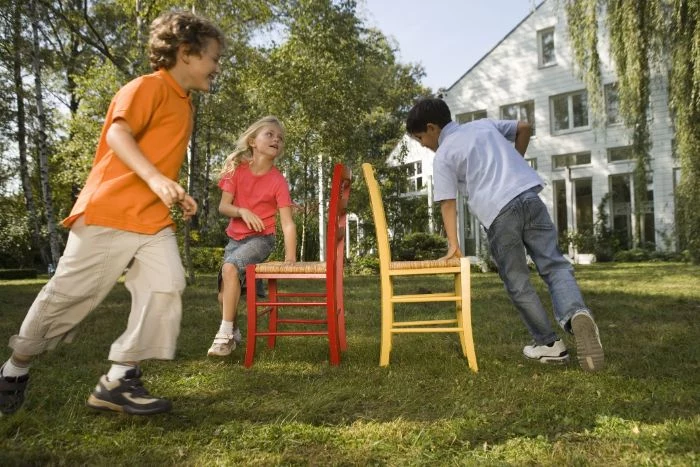
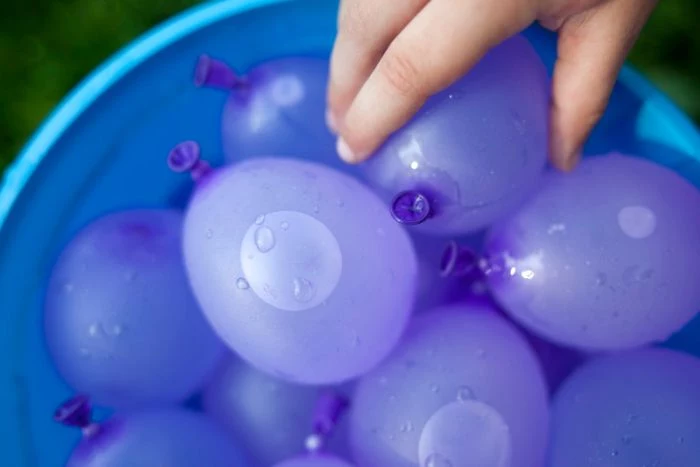
Let them get dirty: It’s more than okay; it’s essential. Research shows that exposure to soil microbes can help build a stronger immune system and even improve mood. A little dirt is a developmental win.
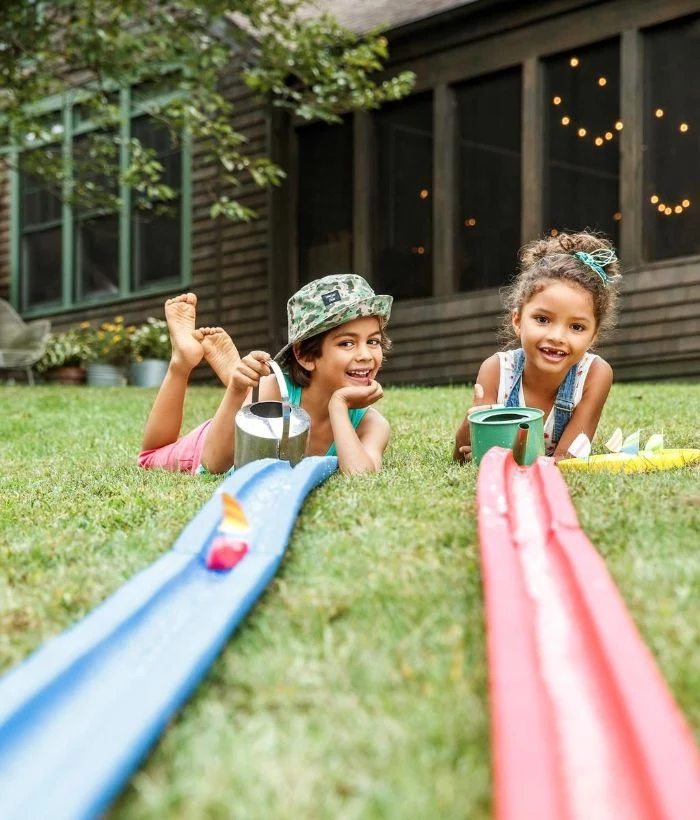

An old pot or pallet can become a five-star
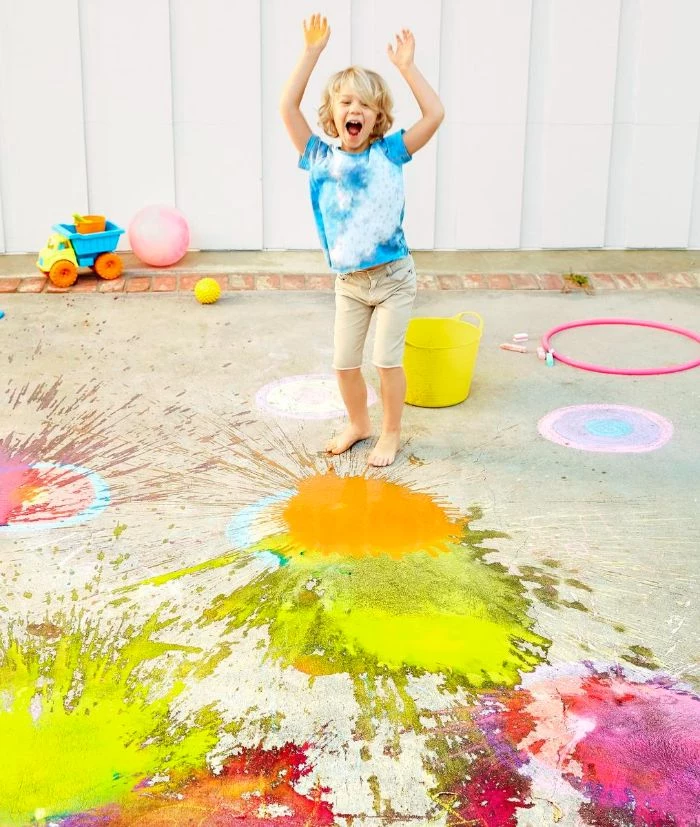
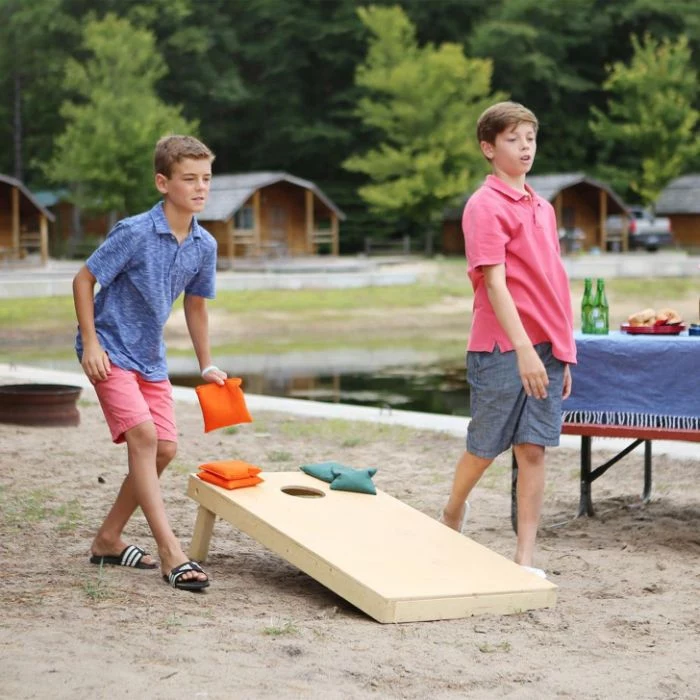
How do you build an obstacle course that’s actually fun?
Forget rigid rules. The best courses are a mix of challenges that use different muscles. Have them crawl under a patio chair, walk a
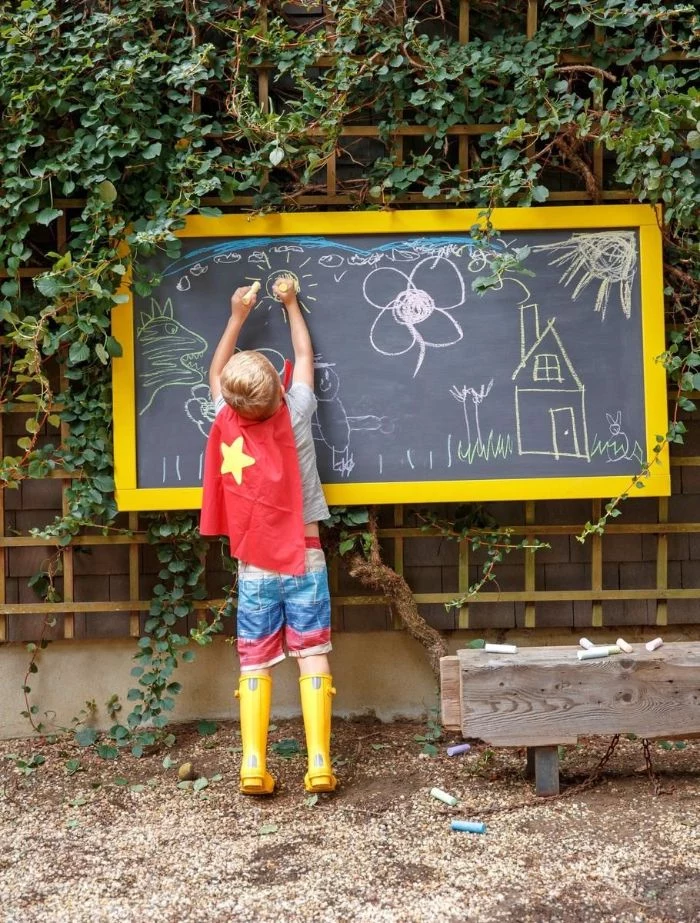
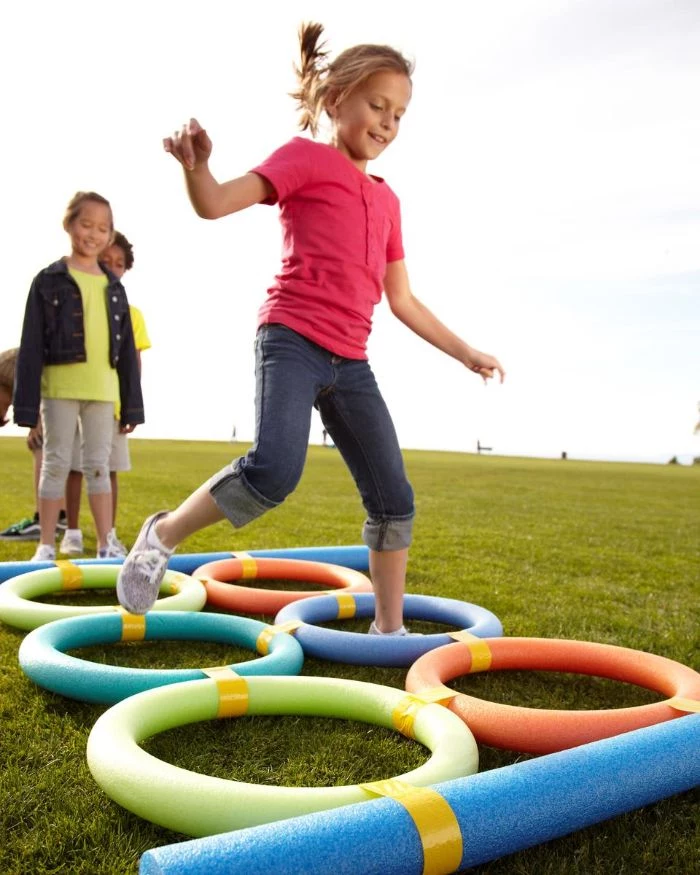
Store-bought Bubbles: Quick, easy, and often come with a great wand. Brands like Gazillion Bubbles are known for producing tons of bubbles with little effort.
DIY Giant Bubbles: Cheaper and a science experiment in itself! Mix 6 cups of water, 1 cup of corn starch (dissolved first), 1/2 cup of dish soap (blue Dawn works wonders), and 1 tbsp of baking powder. Let it sit for an hour. It’s a lesson in chemistry that ends in colossal, shimmering orbs.
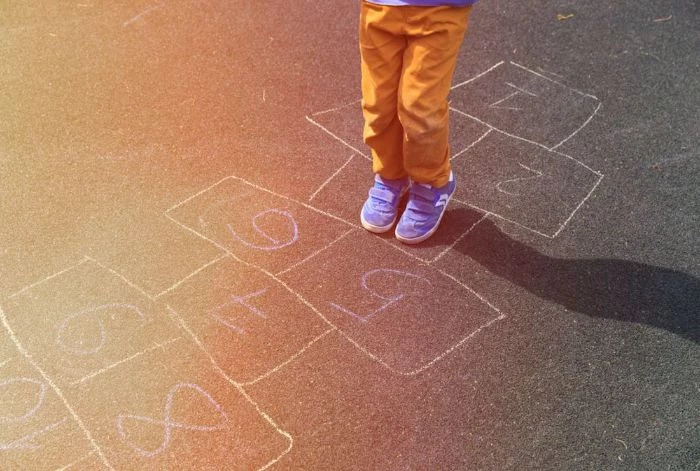

An average cardboard box can hold nearly 10,000 times its own weight before being crushed.
That’s why a simple appliance box is the ultimate plaything. It’s not just a box; it’s a rocket ship, a secret fort, a cave, or a drive-thru window. Provide some non-toxic markers or chalk from a brand like Crayola and watch their imagination literally build a new world. It’s a masterclass in spatial awareness and creative thinking.

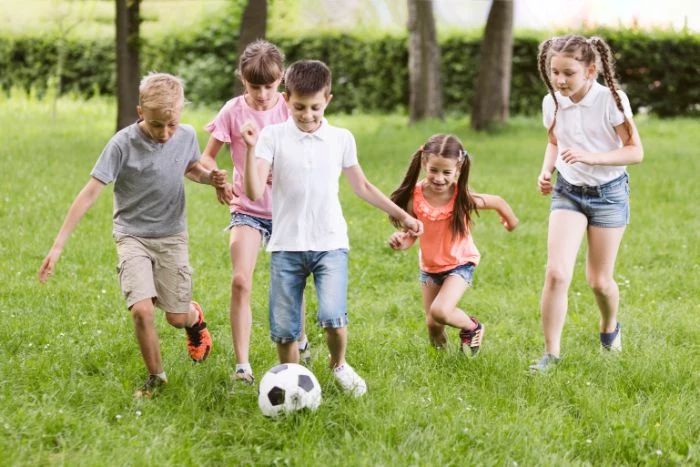
Encourage local biodiversity by building a simple bug hotel. This provides shelter for beneficial insects like solitary bees and ladybugs.
- Start with a small wooden box or stacked terracotta pots.
- Fill the compartments tightly with natural materials: hollow bamboo canes, drilled logs, pinecones, and dried leaves.
- Place it in a sunny, sheltered spot and see who checks in!
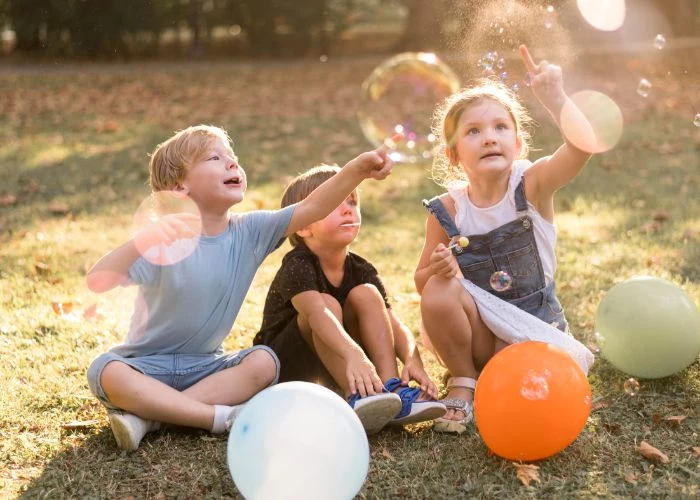
- It sparks creative storytelling.
- It teaches basic scientific concepts about light and shadow.
- It’s a magical way to wind down the day.
The secret? Flashlight tag or shadow puppet theater. As dusk settles, give each kid a small LED flashlight. They can make their shadows dance, grow, and shrink, or you can hang a white sheet from a clothesline for a more formal show.
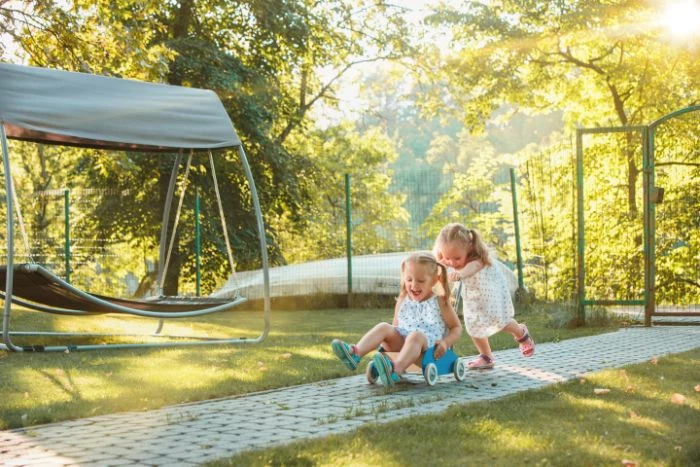
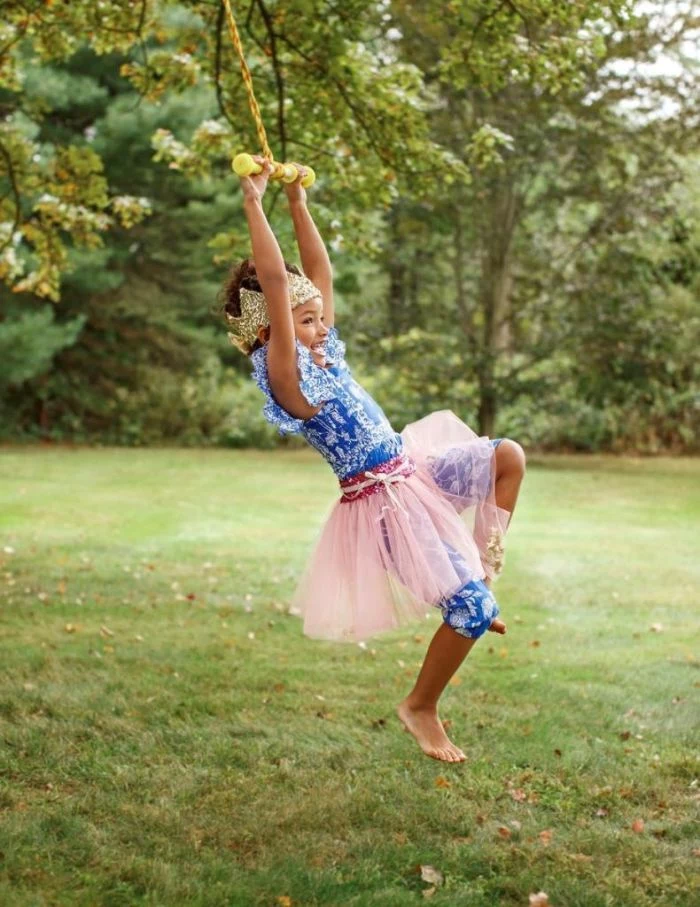
If you make one purchase for backyard play, consider a Tuff Tray or a similar large, shallow mixing tray from a garden center. Originally for cement mixing, these trays are the perfect contained space for the messiest, most engaging play. Fill it with water and soap for a doll washing station, sand and construction toys for a mini-digger site, or even soil and worms for some hands-on biology. It keeps the chaos (mostly) in one spot and can be hosed down in seconds.
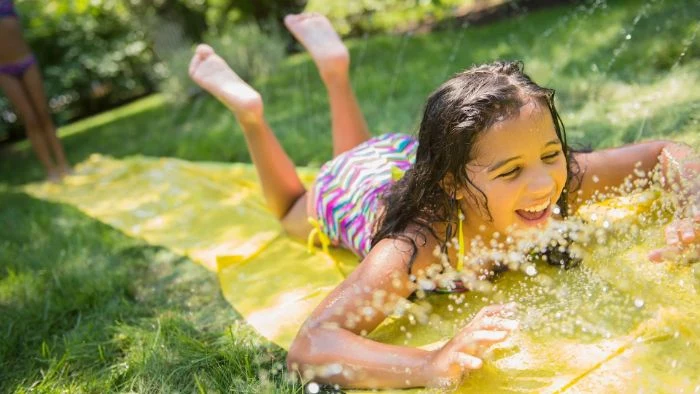
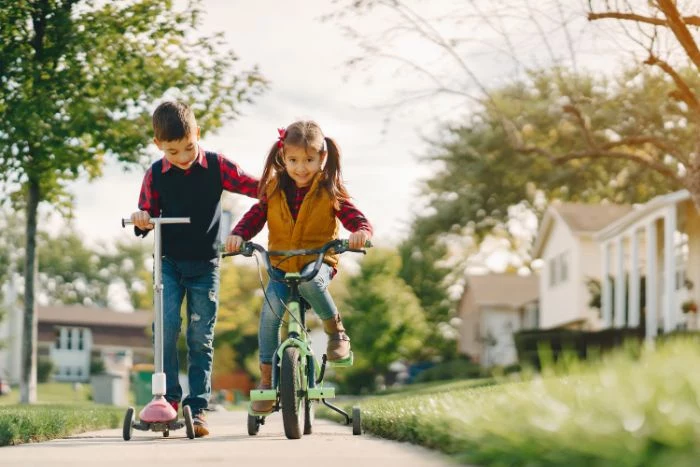
Encourage barefoot time on the grass. The soles of our feet are packed with nerve endings. Feeling the different textures of grass, dirt, and even smooth patio stones provides the brain with a ton of sensory information, which helps improve balance and body awareness.

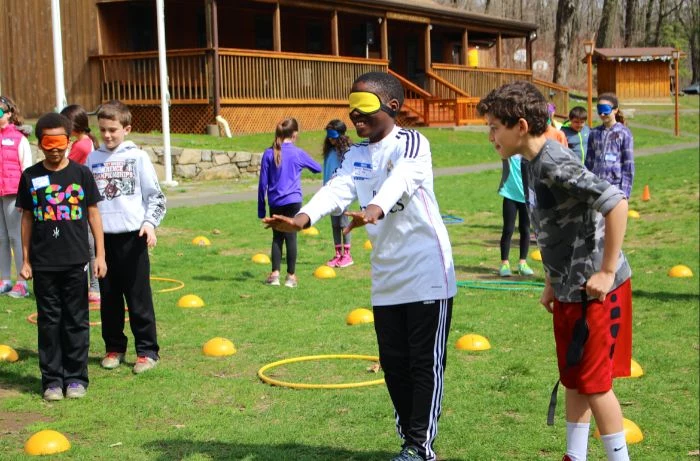
What if we don’t have paintbrushes?
Make your own from nature! It’s a two-for-one activity: the craft and the painting. Go on a texture hunt for things like a sprig of pine needles, a large, sturdy leaf, or a bundle of tall grass. Tie them securely to the end of a stick with some twine or a rubber band. Each
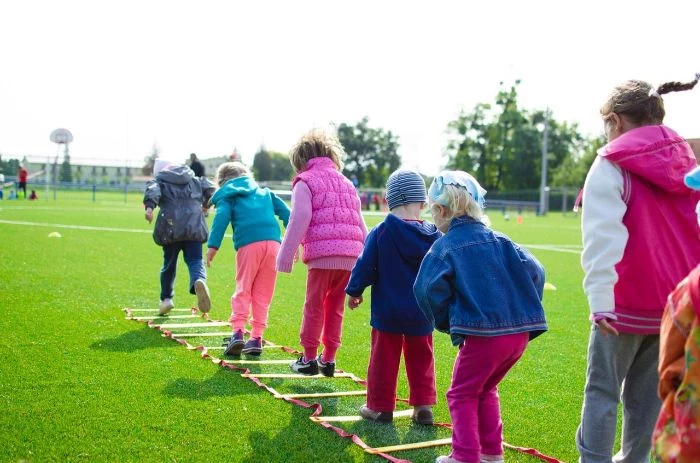
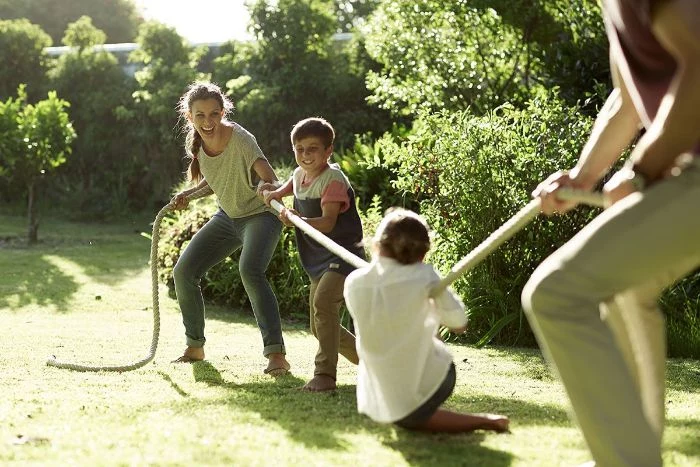
Elevate the classic scavenger hunt beyond just finding objects. Turn it into a sensory quest to connect them with their environment.
- Find something that smells sweet (a flower).
- Find something bumpy (a pinecone or piece of bark).
- Find something that makes a noise when you shake it (a seed pod).
- Find three different shades of green.
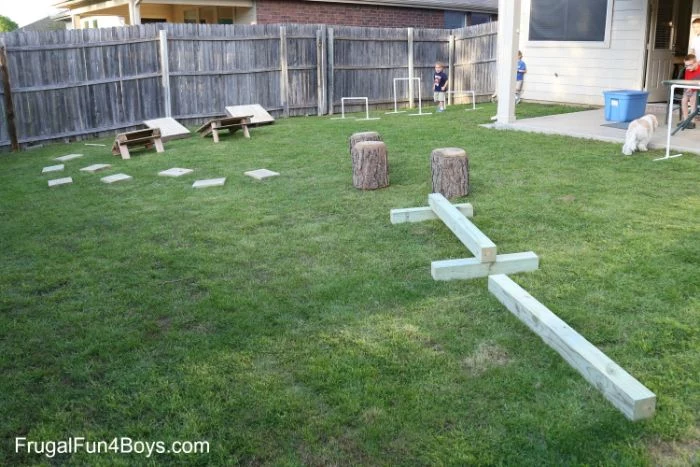
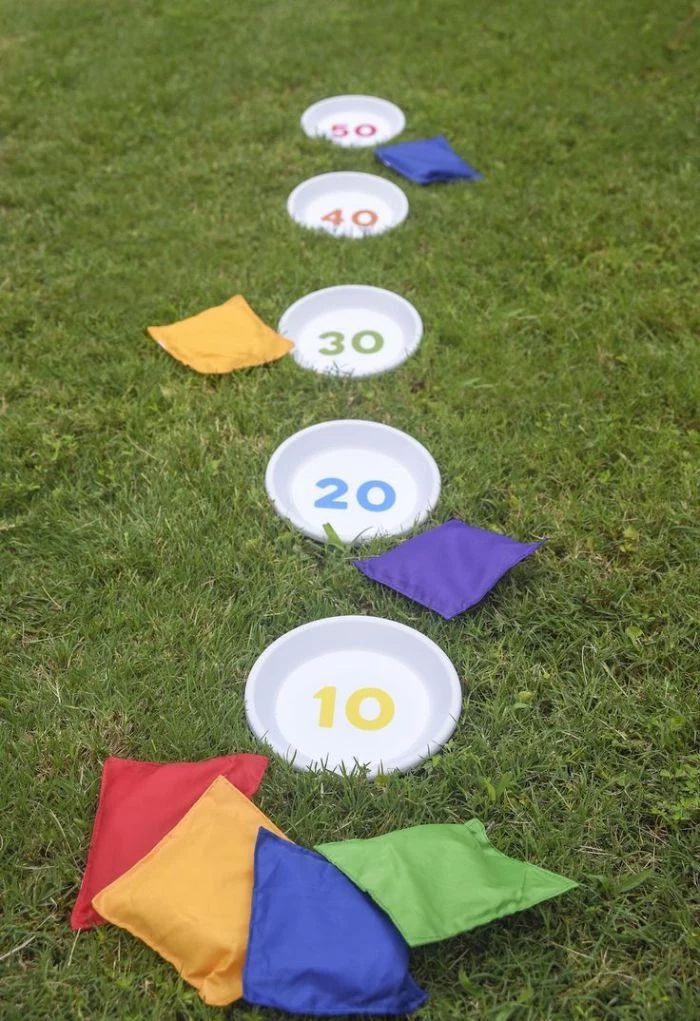
Specialized Sand Toys: Often brightly colored and molded into specific shapes. They’re great, but can sometimes limit how a child sees them.
Repurposed Kitchen Tools: A metal sieve, a soup ladle, a turkey baster, and a set of measuring cups from the dollar store are often more engaging. They feel
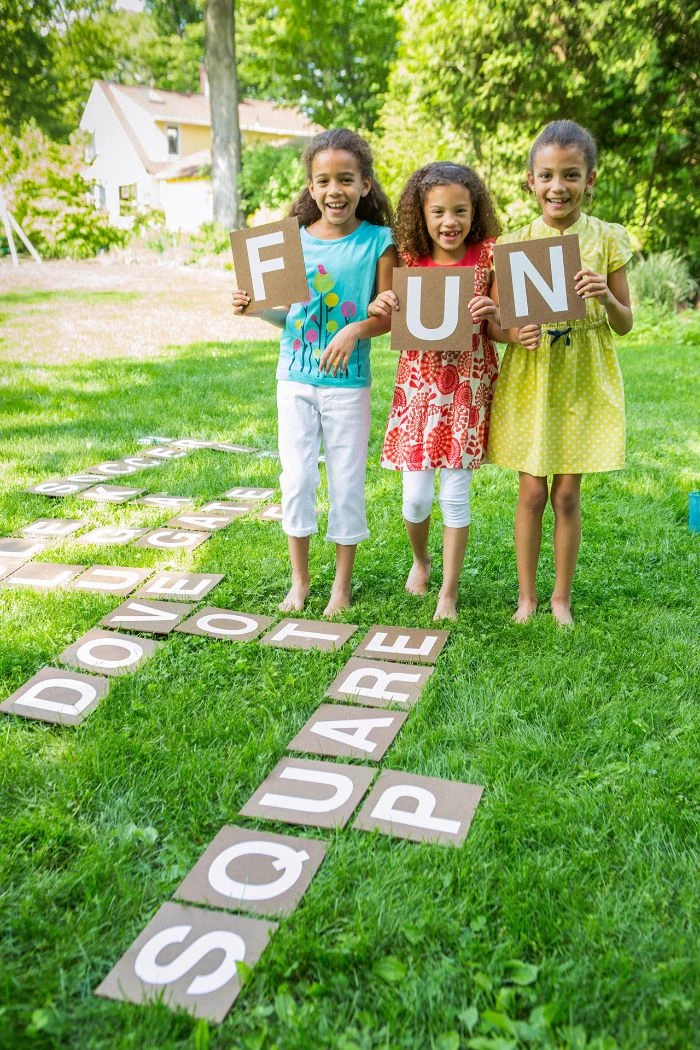
A single chickadee needs to find hundreds of insects and seeds *every single day* to survive.
Making a simple bird feeder does more than just help the birds; it provides a front-row seat to the natural world. A pinecone slathered in peanut butter and rolled in birdseed is all it takes. This simple act teaches empathy, observation skills, and the basics of your local ecosystem.
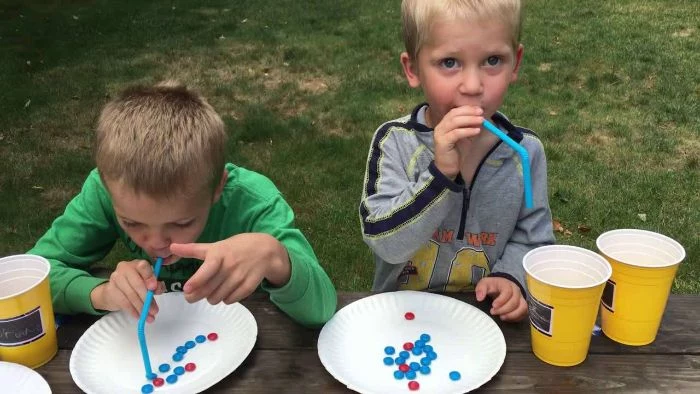
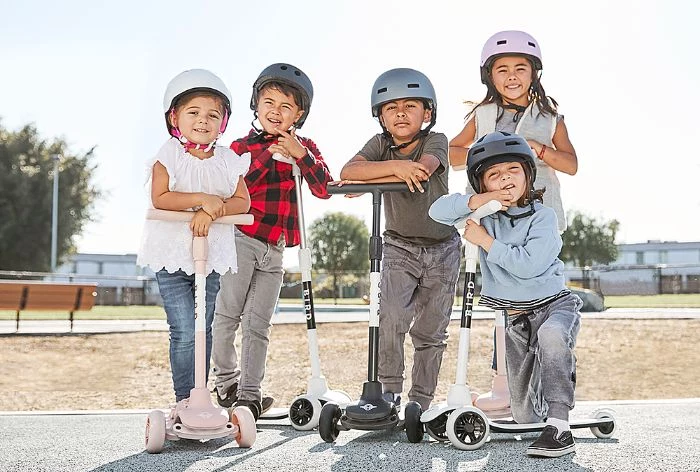
- They’ll develop early mapping and spatial reasoning skills.
- It gives them a sense of ownership and familiarity with their space.
- It encourages a new way of looking at the same old yard.
The secret? Create a map of your backyard together. Use a big piece of paper or cardboard. Let them draw the deck, the big tree, the sandbox, and the fence. They can even add treasures or mark the spot where the best dandelions grow.
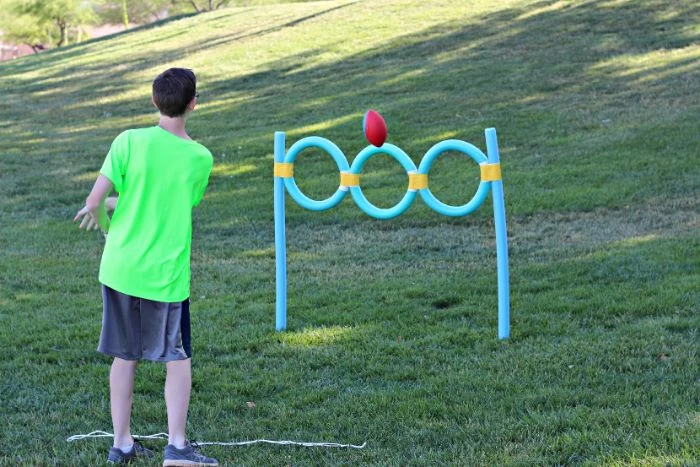
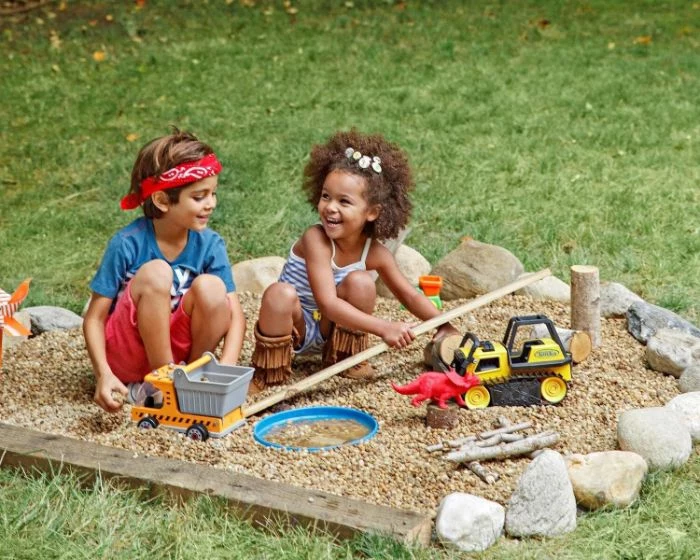
On a hot day, try an ice block excavation. Freeze small, water-safe toys (like plastic dinosaurs or gems) inside a large block of ice—an old ice cream tub works perfectly. Give your kids child-safe tools like spoons, salt shakers, and spray bottles filled with warm water. They’ll have to chip, melt, and strategize to free the treasures, combining sensory play with problem-solving.
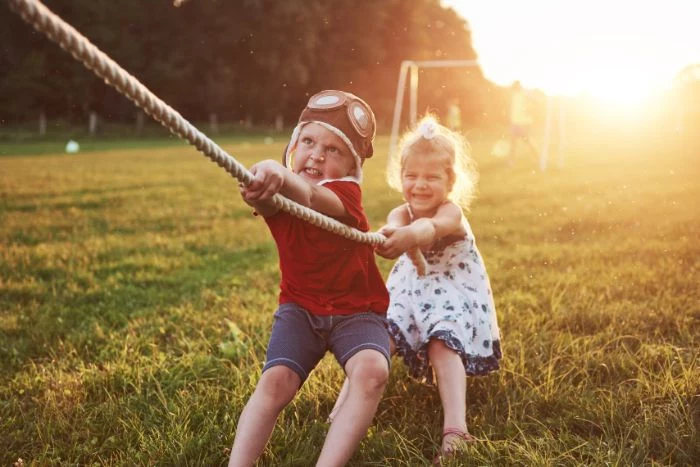
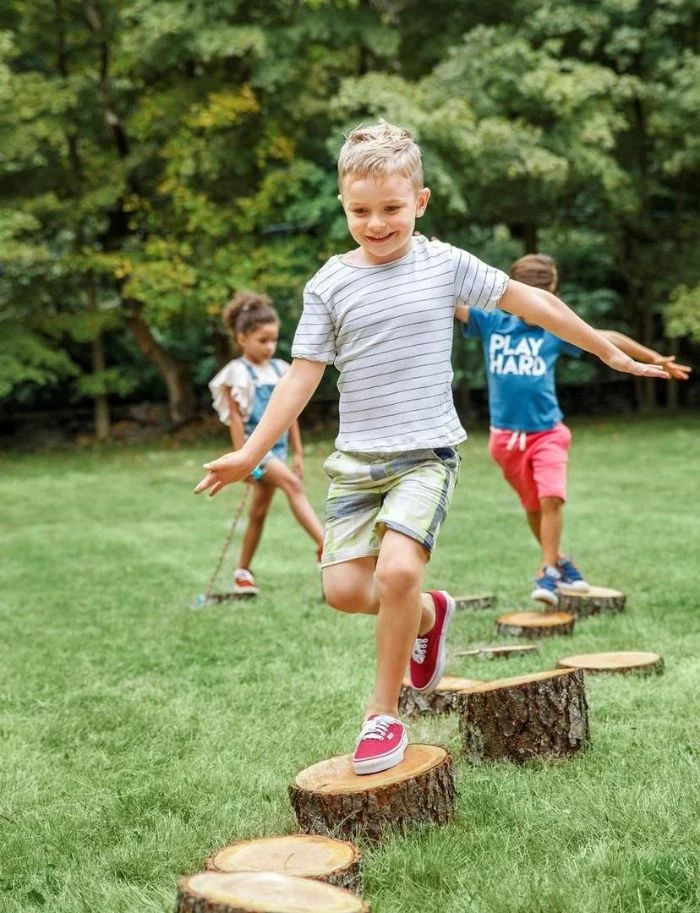
Messy play is great, but cleanup can be a pain. A few pro tips can make it manageable:
